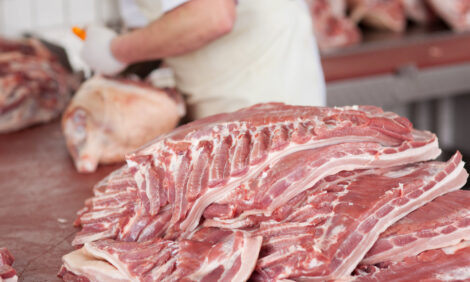



Guidelines for Risk Assessment of Animal Welfare
EU - The European Food Safety Authority (EFSA) has published pioneering guidelines laying out, for the first time, a standardised methodology for the risk assessment of animal welfare.The methodology, which follows a step-by-step approach, is designed to be applicable to all animal species and all factors that affect animal welfare, including housing, transport, stunning and killing. The development of the guidelines supports EFSA’s commitment to ensure that all its work on animal welfare is underpinned by a strong scientific approach. They will be applied by EFSA’s Panel on Animal Health and Welfare (AHAW) to the future scientific advice it gives on risks associated with animal welfare. The guidelines support the implementation of the recently adopted EU Animal Welfare Strategy 2012-2015.
Philippe Vannier, Chair of EFSA’s AHAW Panel, commented: "These keenly anticipated guidelines will form an important part of the body of scientific literature on animal welfare and are made possible thanks to the dedication and experience of the EFSA scientists and external experts involved in their development. For the first time, scientists, veterinarians and all those with an interest in animal welfare are able to follow a practical, harmonised methodology to assess risks associated with welfare of farm animals."
Risk assessment is a specialised field of applied science that involves the evaluation of risks associated with specific factors (or hazards). In the case of animal welfare, a factor is something that has the potential to impact on the animal’s welfare, such as the conditions that it is housed in, how it is transported from the farm to the slaughterhouse or the way in which it is killed. Until now, there have been no specific international guidelines on risk assessment for animal welfare meaning different approaches have been followed by scientific experts involved with this type of work.
The methodological framework proposed in the current Guidance document begins with problem formulation, an important process in which the risk assessor and risk manager work together to define the purpose, breadth and focus of the animal welfare risk assessment. After problem formulation, the risk assessment follows three key steps: exposure assessment, in which the level and duration of exposure to factors are defined; consequence characterisation, which describes what effect exposure to factors will have on welfare; and risk characterisation, which outlines the likelihood of occurrence and magnitude of adverse welfare effects, including any uncertainties and assumptions related to the risk assessment.
The Guidance document supports the scientific prioritisation of animal welfare issues by EFSA and, together with the Authority’s current work on the use of animal-based measures to assess the welfare of farm animals, will be useful in helping scientists, veterinarians and farmers to develop effective welfare controls and monitoring plans at farm level. In the future, the implementation of such welfare controls and monitoring plans should provide valuable feedback on the reliability of the risk assessment approach proposed in the Guidance, leading to further improvement of the proposed methodology.
The Guidance is also designed to complement the work of the European Commission in the area of animal welfare and comes soon after the launch of the new EU’s Animal Welfare Strategy 2012-2015. EFSA will present its recent work on animal welfare risk assessment at an international conference in Brussels (29 February - 1 March 2012) organised by the EC and the EU Danish presidency, entitled: Implementing animal welfare through the new EU strategy: consumer empowerment and market opportunities.









